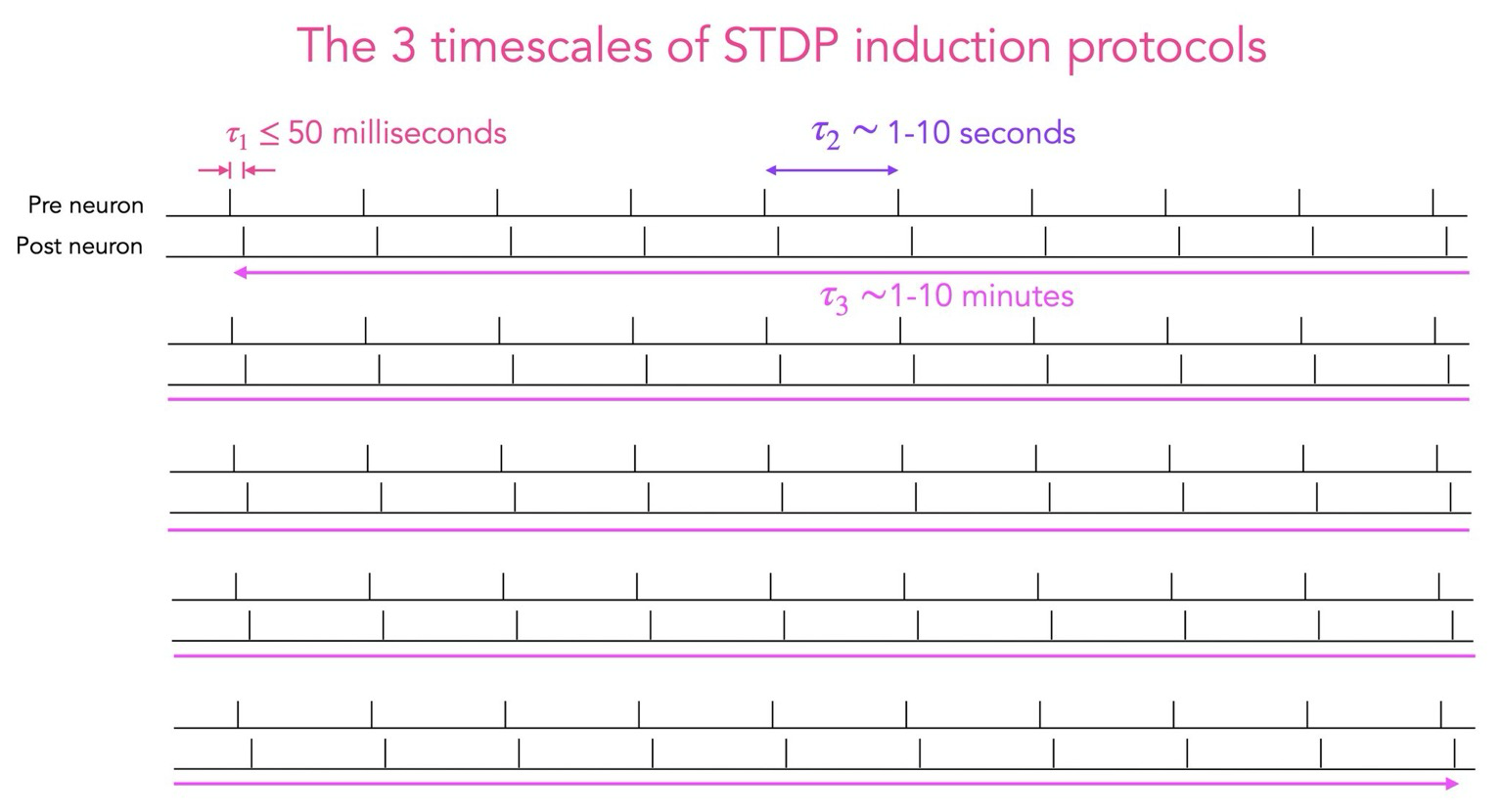Cian O’Donnell on Nostr: people often think of spike-timing-dependent plasticity as a millisecond-timescale ...
people often think of spike-timing-dependent plasticity as a millisecond-timescale learning rule
but in STDP experiments the stimulation is repeated ~50 times. this implies two other slower timescales (see pic)
turns out these slow factors matter just as much as fast signals. I wrote a review on this and related issues https://www.sciencedirect.com/science/article/abs/pii/S0959438823001034

but in STDP experiments the stimulation is repeated ~50 times. this implies two other slower timescales (see pic)
turns out these slow factors matter just as much as fast signals. I wrote a review on this and related issues https://www.sciencedirect.com/science/article/abs/pii/S0959438823001034
